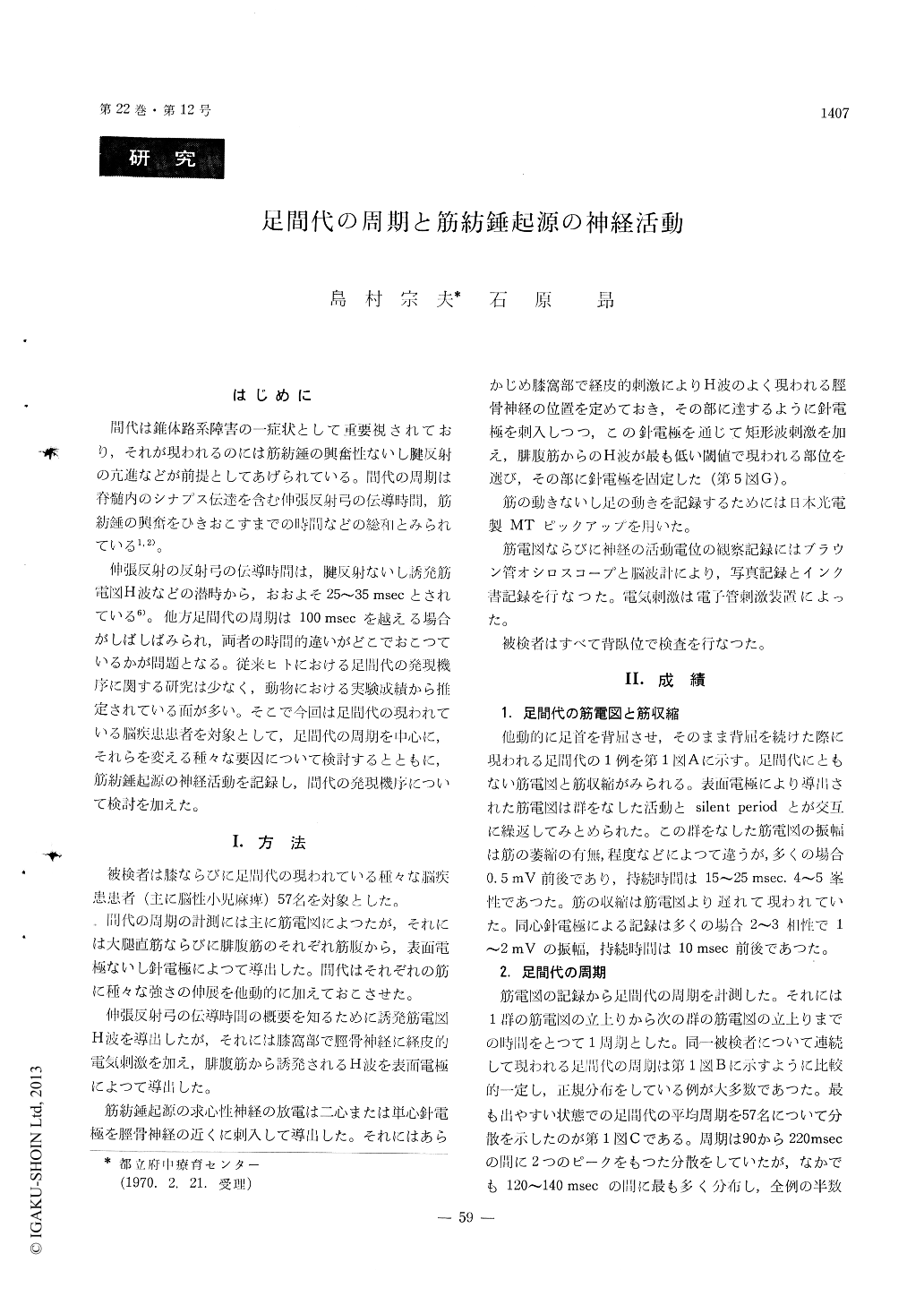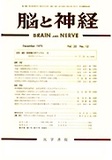Japanese
English
- 有料閲覧
- Abstract 文献概要
- 1ページ目 Look Inside
はじめに
間代は錐体路系障害の一症状として重要視されており,それが現われるのには筋紡錘の興奮性ないし腱反射の亢進などが前提としてあげられている。間代の周期は脊髄内のシナプス伝達を含む伸張反射弓の伝導時間,筋紡錘の興奮をひきおこすまでの時間などの総和とみられている1,2)。
伸張反射の反射弓の伝導時間は,腱反射ないし誘発筋電図H波などの潜時から,おおよそ25〜35msecとされている6)。他方足間代の周期は100msecを越える場合がしばしばみられ,両者の時間的違いがどこでおこっているかが問題となる。従来ヒトにおける足間代の発現機序に関する研究は少なく,動物における実験成績から推定されている面が多い。そこで今回は足間代の現われている脳疾患患者を対象として,足間代の周期を中心に,それらを変える種々な要因について検討するとともに,筋紡錘起源の神経活動を記録し,間代の発現機序について検討を加えた。
1. The period of the clonus and afferent dis-charges from the muscle were measured on 57 patients, cerebral palcy and other cerebral disorders.
2. The periods of the patellar and ankle clonus induced by passive muscle stretch, which were dis-tributed between 90 and 220 msec, those mainly were 120-140 msec. The periods varied under different conditions : (1) Partial differences were obtained ; the period was about 16 (10-20) msec longer the patellar than the ankle. (2) Periods of the ankle clonus were parallel with the latency of the H reflex in the gastrocnemius muscle. In case of longer latency of the H reflex, longer period was obtained in ankle clonus. (3) The period was changed with passive muscle stretch : By weak stretch elicited the longer period, and by strong stretching obtained short period. (4) The period was varied at different muscle-tonus : Hypertonic stage obtained shorter period, and hypotonic stage observed longer period.
3. Electroneurograms were recorded from the tibial nerve by means of the bipolar needle electrode, during the ankle clonus. Two kinds of discharges were obtained, one of which was synchronous of the clonus EMG, this may belong to motor nerve discarges. The other of which was appeared at about half period of the clonus EMG. This may be afferent discharges of muscles based on following results : (1) An initial phase of the discharge was antagonism, e. g., if motor nerve discharge was negative in the initial phase, the discharge was posi-tive deflection, vice versa. (2) The discharge was increased by muscle stretch and pressure, but it was not changed by skin pinching, touching and pressure. (3) Conduction velocity of the nerve fiber underly-ing the discharge was about 60-75 m/sec.
4. Time sequence of recording of the afferent discharges may imply that the period of clonus may be the delayed time in the spinal transmission (45-60 msec) plus additional delayed time of muscle spindle (40-65 msec).

Copyright © 1970, Igaku-Shoin Ltd. All rights reserved.


